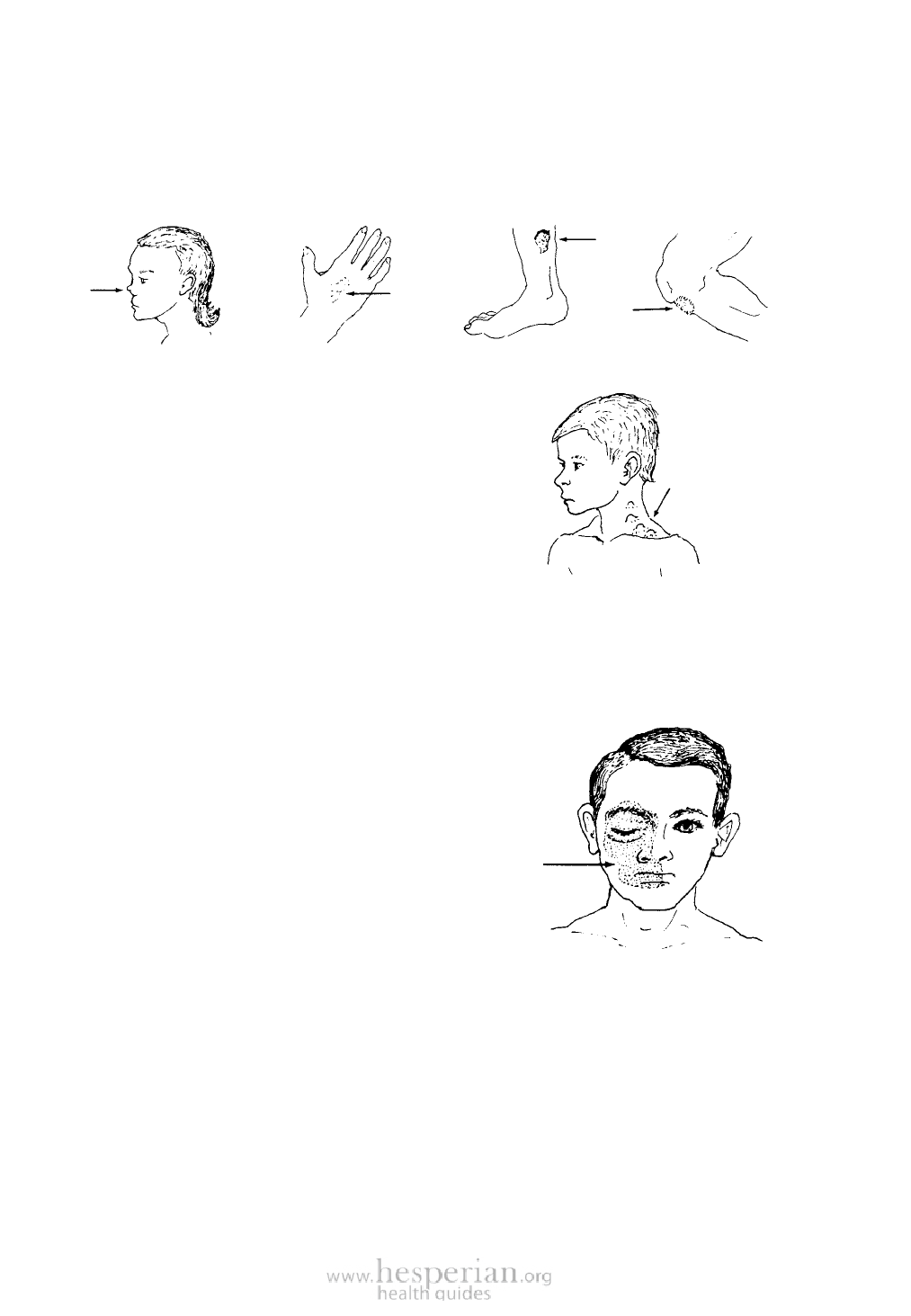
212 Where There Is No Doctor 2011
TUBERCULOSIS OF THE SKIN OR LYMPH NODES
The same microbe that causes tuberculosis of the lungs also sometimes affects
the skin, causing painless
tumors
that disfigure,
chronic patches of
sores,
skin
ulcers,
or
big
warts.
As a rule, TB of the skin develops slowly, lasts a long time, and keeps coming
back over a period of months or years.
Also, tuberculosis sometimes infects the lymph
nodes—most often those of the neck or in the area
behind the collar bone, between the neck and the
shoulder. The nodes become large, open, drain pus,
seal closed for a time, and then open and drain again.
Usually they are not painful.
TUBERCULOSIS
OF THE LYMPH
NODES, OR
SCROFULA
Treatment:
In the case of any chronic sore, ulcer, or swollen lymph nodes, it is best to
seek medical advice. Tests may be needed to learn the cause. Tuberculosis of
the skin is treated the same as tuberculosis of the lungs (see p. 180). To keep the
infection from returning, the medicines must be taken for many months after the
skin looks well.
ERYSIPELAS AND CELLULITIS
Erysipelas (or St. Anthony’s fire) is a very painful
acute (sudden) infection in the skin. It forms a hot,
bright red, swollen patch with a sharp border. The
patch spreads rapidly over the skin. It often begins on
the face, at the edge of the nose. This usually causes
swollen lymph nodes, fever, and chills.
Cellulitis is also a very painful, acute infection of the skin that can appear
anywhere on the body. It usually occurs after a break in the skin. The infection is
deeper and the borders of the patch are less clear than with erysipelas.
Treatment:
For both erysipelas and cellulitis, begin treatment as soon as possible. Use
an antibiotic: penicillin tablets, 400,000 units, 4 times a day, in serious cases,
injectable procaine penicillin, 800,000 units daily (see p. 352). Continue using the
antibiotic for 2 days after all signs of infection are gone. Also use hot compresses—
and aspirin for pain.